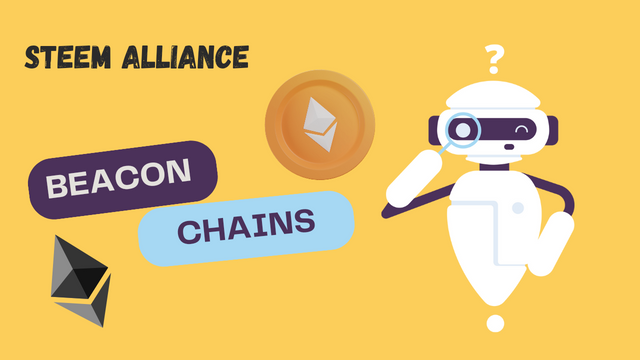Blockchain technology has witnessed remarkable developments since its dawn especially in scalability, security, and efficiency improvement. To facilitate Ethereum 2.0, one of these advancements is the beacon chain. Understanding the role and functionality of the beacon chain is essential for grasping the future of blockchain technology. So let's start understanding this beacon chain in this post.

What is a Beacon Chain?
The beacon chain provides an upgrade to Ethereum 2.0. It is also called ETH 2.0. It introduced proof of stake in place of proof of work. And it is managed by the beacon chain. It was done to improve scalability, security and sustainability on Ethereum.
Core Functions of the Beacon Chain
Some significant roles that are played by the beacon chain within the Ethereum 2.0 ecosystem are:
Validator Management:
Validators movements are monitored by it who are in charge of proposing new blocks or validating them while making sure that those picked have put down a stake amount represented in Ether.
It guards against dishonest validators and rewards honest ones through a process referred to as ‘slashing’.
Consensus Mechanism:
The PoS consensus protocol is used by the beacon chain where validators are randomly picked to propose and attest blocks.
This is important for security as it fosters unpredictability hence preventing predictability and reducing the risk of targeted attacks.
Coordination and Synchronization:
It coordinates and synchronizes shard chains which are smaller, more manageable pieces of the blockchain. While this document does not go into details about shard chains, it should be mentioned that the beacon chain has a vital role in making sure these shards work together smoothly.
The beacon chain ensures that data and transactions across different shards are consistently and accurately recorded.
Randomness for Security:
- The beacon chain uses cryptographic randomness to assign validators to shards and propose blocks. This randomness increases security by ensuring unpredictability and fairness in validator assignment.
Benefits of the Beacon Chain

The introduction of a beacon chain presents various advantages to Ethereum network such as:
Scalability:
- By implementing POS system as well as supporting shard chains, the capacity of the network in terms of processing transactions is significantly increased. This scalability is crucial in order to be able to accommodate rising numbers of users and applications on Ethereum.
Security:
- The security of the network is enhanced through the beacon chain’s control over validators, and randomness in assignments. Slashing mechanism acts as a deterrent to malicious activities by enforcing financial costs on bad actors.
Energy Efficiency:
- Moving from PoW to PoS has far reaching implications for energy consumption required to keep the system going. It is estimated that PoS consumes approximately 99.95% less energy than PoW which makes it more environmentally friendly for Eth 2.0
Economic Finality:
- Economic finality, as introduced by the beacon chain, guarantees that once a block has been finalized, it cannot be undone. This feature gives an extra layer of certainty and security for transactions.
Challenges and Considerations
While there are many benefits to employing the beacon chain there are also several challenges that come with its implementation:
Implementation Complexity:
- Technical changes are necessary during transition from proof of work (PoW) to proof of stake (PoS), including adding the beacon chain into the system. It is difficult to ensure a smooth transition while maintaining network security and performance at all times.
Validators Role:
- The PoS network requires enough validators to take part in it and maintain their stakes for it to work effectively. It is important to keep incentivizing and retaining the validators as this affects the stability of the network.
Threats Towards Security:
- Even though PoS has introduced some enhanced security measures, it still remains exposed to risks. This is because efforts are put into ensuring that there are strong mechanisms on the beacon chain and no attacks leak through.
Conclusion
The beacon chain is an amazing addition to the ethereum chain. It will allow more scalability, security and sustainability to the ethereum network. Beacon chain plays a central role through the validators and through the implementation of the proof of stake. And it works with the shard chains to improve the ethereum network. As blockchain technology continues to evolve, innovations such as the beacon chain will be instrumental in addressing these challenges thereby unlocking decentralized systems’ full potential.
X Permotion
https://twitter.com/shabbir_saghar/status/1791902334567563648?t=5PAYXTLNR8sm4fZFLm0gcw&s=19
Downvoting a post can decrease pending rewards and make it less visible. Common reasons:
Submit
Note:- ✅
Regards,
@theentertainer
Downvoting a post can decrease pending rewards and make it less visible. Common reasons:
Submit